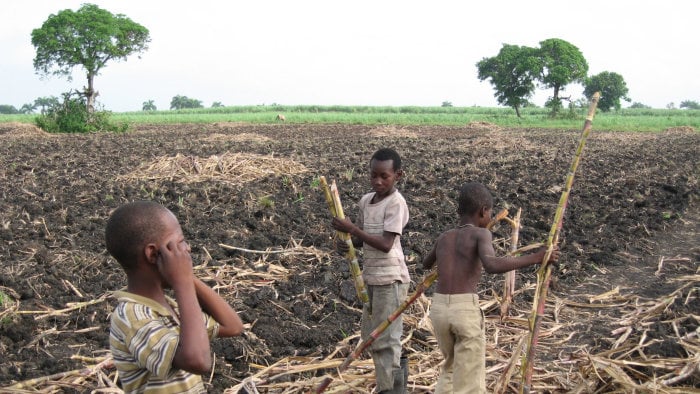US report: In the Dominican Republic, “children are subjected to the worst forms of child labour”

Miami – The exploitation of child labor in global supply chains has spread “disturbingly” to all regions of the world. This phenomenon affects about 160 million children, with Asia as the largest regional concentration, according to the report ‘Seat & Toil’ of the U.S. Department of Labor released Thursday.
According to the report, child labor in gold mining occurs in most countries (26), followed by brick making (18), labor in sugar cane fields (18), coffee plantations (17), and tobacco (17).
As for forced child labor, this affects almost 28 million children, with textile workshops occupying the first place in 10 countries.
The construction sector (9 countries), cotton mills (7), and fishing (6) follow, warn the reports ‘2024: List of goods produced by child labor or forced labor and ‘2023: Findings of the worst forms of child labor.
The latest list of goods produced through child labor or forced labor includes 204 goods from 82 countries that the U.S. believes are produced through child labor or forced labor in violation of international standards.
This edition includes 72 additions, including 37 goods not previously included, such as jujube, lead, nickel, polyvinyl chloride, and squid. It removes Argentine blueberries, Cambodian salt, Thai shrimp, and Mongolian fluorspar from the list.
“These reports provide important guidance as we work to strategically reduce egregious child labor and forced labor practices globally,” explained Acting Secretary of Labor Julie Su.
She acknowledged that the United States is “not immune” to these abuses amid a significant increase in the number of children employed illegally in the country.
She stressed that the Administration will use its full force to “hold U.S. employers accountable and work with global partners to eradicate the scourge of child and forced labor wherever it exists.”
The report also includes several studies that track goods tainted with forced or child labor through complex global supply chains, such as cotton textile products from China and Vietnam made with Chinese cotton.
Or sugar products linked to forced labor in the sugar cane industry in the Dominican Republic, among others.
Trafficking and sexual exploitation
As for the worst forms of child labor, which affects 131 countries, the report includes trafficking, debt bondage, forced labor, hazardous work, commercial sexual exploitation, and the use of children in armed conflict or illicit activities.
The analysis provides nearly 1,900 country-specific recommendations to end these scourges.
The main areas of concern span numerous industries, including consumer goods, electronics, apparel, textiles and manufacturing, and the mining and metals sectors.
This includes “aluminum from China (forced labor), gold from the Central African Republic (child labor), Chad (forced labor) or Venezuela (child labor).
The report highlights 12 new additions from China, where state-sponsored forced labor in the Xinjiang Uyghur autonomous region “continues to affect major supply chains.”
The report warns that some minerals, such as cobalt, copper, and zinc, are produced by children in artisanal and small-scale mines; other critical minerals, such as indium, are obtained from ores mined by children.
In 2023, countries such as Colombia, Argentina, Chile, Ecuador, and Mexico registered “significant progress” against child labor in Latin America, while Peru had “moderate progress.”
The U.S. Department of Labor warned that children in Mexico are involved in the harvesting of products that are later used to make drugs.
The report warned that “many children are also involved in harvesting crops used for the production of substances-poppies for opium and heroin in Mexico.”
The report also stated that 20% and 40% of children work in industries such as construction in Mexico or Colombia.

















Stop using Haitians for cheap labor, send them all back to Haiti to work in their own fields and factories.